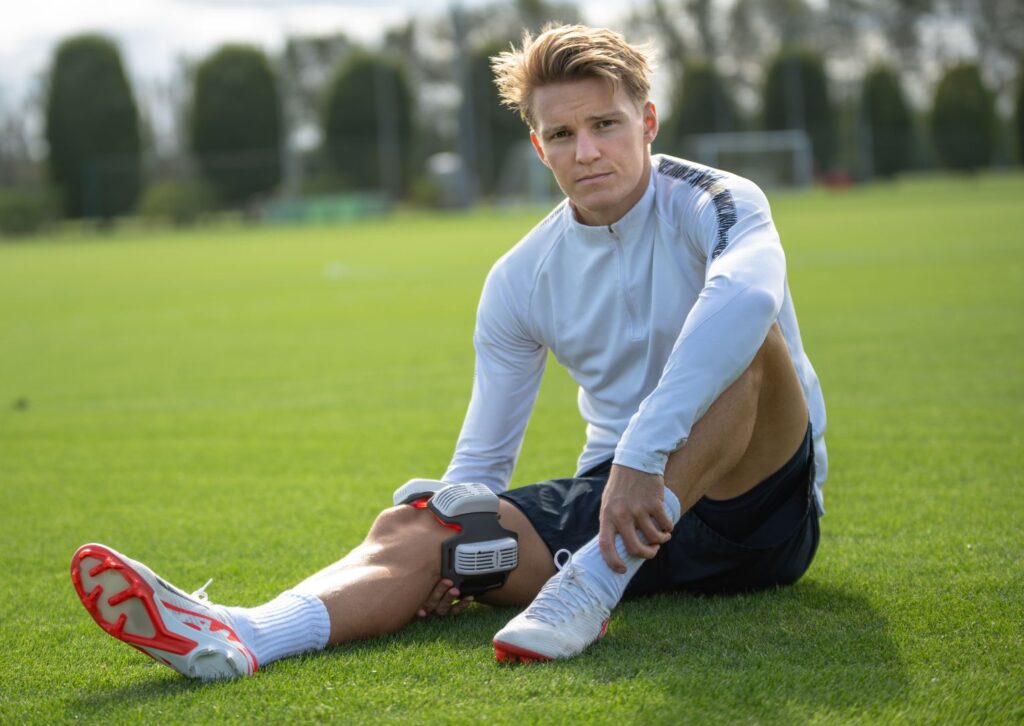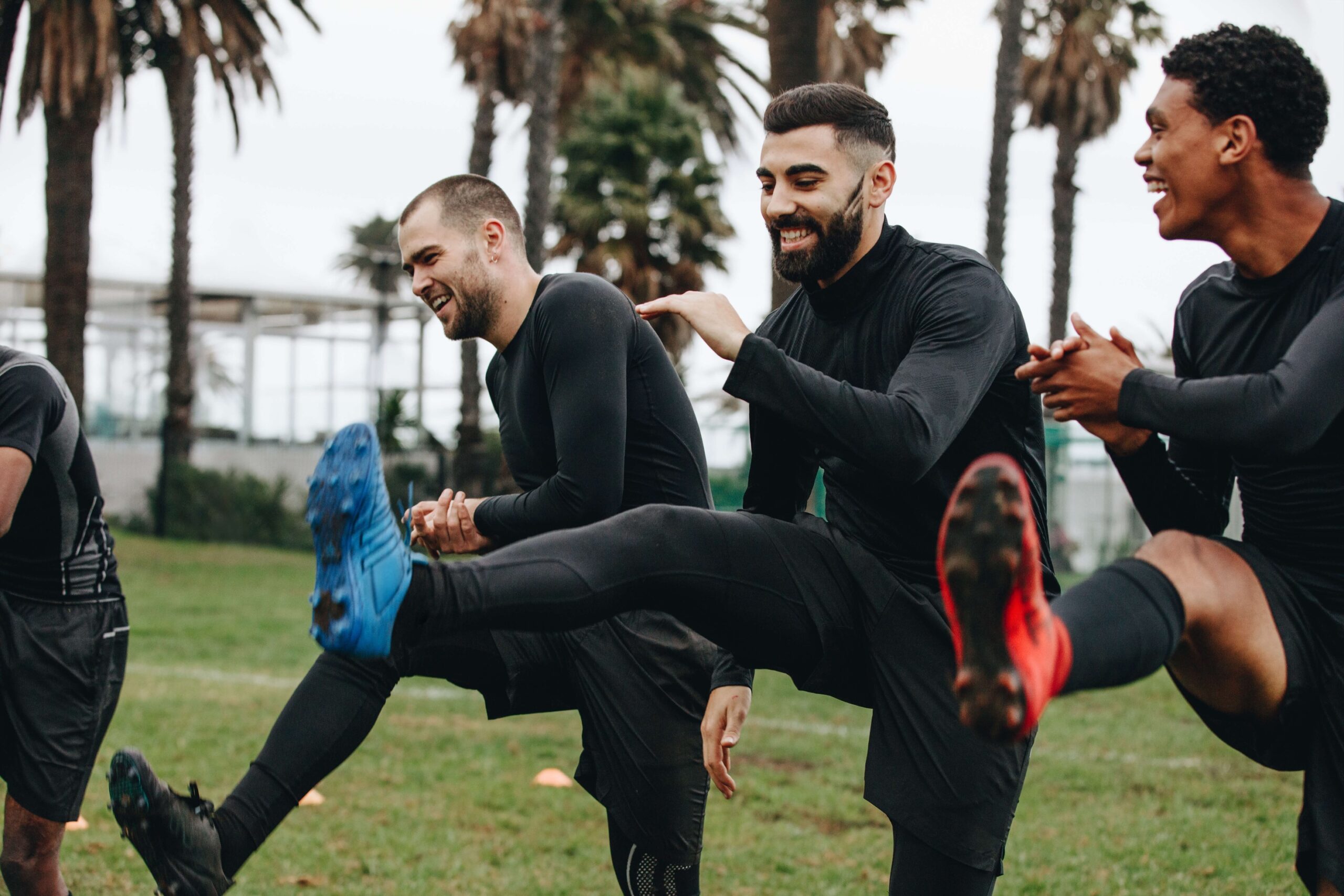Your cart is currently empty!
How to Develop Stamina for Soccer
Table of Contents
Playing soccer, whether professionally or recreationally, requires enormous stamina due to its combination of extremely taxing physical activities such as sprinting, jumping, tackling, dribbling, shooting, passing, and constant changes in direction and running speed during a game. So, how to develop stamina for soccer?
Soccer players typically build stamina through four strategies: cardiovascular training, strength training, proper nutrition, and sleep.
However, near-infrared light therapy has recently emerged as an additional way to increase stamina and improve the results of the other four stamina-building strategies.
What Is Near-Infrared Light Therapy?
Near-infrared light therapy (often also referred to as red light therapy or low-level laser therapy) consists of near-infrared and red light-emitting diodes that produce the effect of natural sunlight at dusk and dawn to bring about a whole array of health benefits that can improve one’s physical and mental well-being.
It’s non-invasive, natural, chemical-free, safe, and effective, and it doesn’t involve heat or harmful UV rays that can cause serious skin damage. Near-infrared light therapy can be applied through a portable device that can easily and conveniently be used by any user in the comfort of their home without needing expensive visits to local health and wellness centers.

This mode of therapy treatment consists of a combination of two types of light: near-infrared and red. Near-infrared light belongs to the invisible light spectrum, and its wavelengths are quite long – typically from 700 all the way to 2,500 nanometers (although those in the 800-850 range have proven to be the most effective). On the other hand, red light is visible, and its wavelengths are considerably shorter, usually from 630 to 700 nanometers.
What that means in practical terms is that red light is primarily effective on the skin’s surface and used to accelerate wound healing, reduce wrinkles, skin roughness, scars, burns, UV damage, and improve skin conditions like psoriasis and acne. Near-infrared light, however, can penetrate beyond the skin’s surface to reach the body’s cells, muscles, joints, and bones.
So, can near-infrared light therapy be the answer to the question – how to develop stamina for soccer?
How to Develop Stamina for Soccer with Near-Infrared Therapy
Near-infrared therapy has amazing topical and systemic effects. The best way to introduce it to your stamina-boosting efforts is to do what you’ve already been doing, but add near-infrared therapy to it. As a result, you will make your usual stamina improvement methods more efficient without adding additional work to your daily schedule. Here are the mechanisms of this extraordinary synergy explained. Let’s see how to develop stamina for soccer using red and near-infrared therapy.
Cardiovascular Training
Since soccer involves an extraordinary amount of sprinting, there’s simply no better way to improve your stamina than cardiovascular training, whether that’s by way of cycling, running, swimming, hiking, using a treadmill, etc. – the options are endless. Soccer training regimens always include many activities and exercises that combine cardio and core strength training or joint integrity. Some of them include:
Cardiovascular training helps increase energy and stamina, control blood pressure, improve cholesterol, and maintain an ideal weight, so it’s the perfect way for a soccer player to improve and maintain stamina over long periods of time.
Research published in American Journal of Physiology-heart and Circulatory Physiology proves cardiovascular training can improve function in every tissue on the cardiac, vascular, immune, and molecular levels due to the cellular and molecular mediators in the heart and peripheral vascular system and the changes in neural elements that regulate blood pressure and blood flow.
So, how to develop stamina for soccer using near-infrared light and cardio? Near-infrared light has been shown to improve the ATP production, an organic compound that provides energy to fuel major biological functions, including protein synthesis, muscle contraction, and nerve impulse transmission. In this way, near-infrared light can improve cardiovascular health, thyroid function, and immune health, effectively enhancing the effects of cardiovascular training.
Strength Training
Strength training – such as pull-ups, deadlifts, squats, push-ups, etc. – can be used to improve muscle mass and power. Soccer players can use strength training not only to build muscles but also to improve their speed, agility, endurance, and balance and decrease the risk of injury.
A study on how distinct modes of strength training can improve soccer players’ performance concluded that neuromuscular training improves both physiological and physical measures that are required for high-level performance in soccer. It also argued that combined strength and combined high-intensity training approaches may constitute a good strategy within a designed, periodized training regime.
This is also where near-infrared light therapy can help because it can boost the effects of strength training. A combination of near-infrared light and strength training has been proven to optimize human muscle performance compared to strength training alone.
Proper Nutrition
To achieve and sustain top soccer performance in the long run, a soccer player must maintain a healthy diet consisting of three balanced meals daily with enough protein, carbohydrates, and healthy fats and a few smaller meals or healthy snacks.
How to develop stamina for soccer through nutrition and near-infrared and red light therapy? By adding photobiomodulation sessions to your day and letting it help your gut and your thyroid work better.
Therapy using near-infrared light can also help improve nutrient absorption, as it can increase muscle glycogen synthesis, a process through which the body forms and stores glycogen, its main energy source. Because of this, near-infrared light can help control blood glucose levels and thus prevent illnesses such as heart and kidney disease, vision loss, diabetes, etc.
In addition, near-infrared light can also help balance the function of the thyroid gland, which is essential to a properly functioning metabolism. In this way, near-infrared light can also help accelerate your metabolism and prevent weight gain, extreme fatigue, and mental fog.
Sleep
Sleep is an absolute necessity when it comes to proper soccer recovery. Simply put, all the training and healthy diet in the world will not help improve your stamina if you’re not getting regular, high-quality sleep every night.
Unfortunately, these days, we’re all facing a disruption of our regular sleep patterns due to the huge quantities of blue light emitted from our screens after dusk. What’s worse, professional athletes often suffer from insomnia due to their highly stressful, competitive lifestyles.
And the consequences of insomnia include issues with memory, problem-solving, creativity, emotional processing, and judgment, all of which can negatively affect a soccer player’s performance on the field.
Several studies have shown that near-infrared light therapy treatments can trigger the release of melatonin, a hormone that regulates the circadian rhythm (aka natural sleep and wake patterns), which can lead to much-needed improvements in sleep and recovery for soccer players.
Cardiovascular training, strength training, proper nutrition, and sleep are tried and true strategies that are your usual answers to the question – how to develop stamina for soccer. However, treatments using near-infrared light can enhance the effects of these strategies, bolstering a soccer player’s stamina and performance on the field in the long run.
Sources
- Franklin BA, Eijsvogels TMH, Pandey A, Quindry JC, Tóth PP. Physical activity, cardiorespiratory fitness, and cardiovascular health: A clinical practice statement of the American Society for Preventive Cardiology Part II: Physical activity, cardiorespiratory fitness, minimum and goal intensities for exercise training, prescriptive methods, and special patient populations. American Journal of Preventive Cardiology. 2022;12:100425. doi:10.1016/j.ajpc.2022.100425
- Zucker IH, Musch TI. Benefits of exercise training on cardiovascular dysfunction: molecular and integrative. American Journal of Physiology-heart and Circulatory Physiology. 2018;315(4):H1027-H1031. doi:10.1152/ajpheart.00516.2018
- Begum R, Da Costa Calaza K, Kam JH, Salt TE, Hogg C, Jeffery G. Near-infrared light increases ATP, extends lifespan and improves mobility in aged Drosophila melanogaster. Biology Letters. 2015;11(3):20150073. doi:10.1098/rsbl.2015.0073
- Silva JR, Nassis GP, Rebelo A. Strength training in soccer with a specific focus on highly trained players. Sports Medicine – Open. 2015;1(1). doi:10.1186/s40798-015-0006-z
- Castro KMR, De Paiva Carvalho RL, Rosa GM, et al. Can photobiomodulation therapy (PBMT) control blood glucose levels and alter muscle glycogen synthesis? Journal of Photochemistry and Photobiology B: Biology. 2020;207:111877. doi:10.1016/j.jphotobiol.2020.111877
- Höfling DB, Chavantes MC, Juliano AG, et al. Assessment of the effects of low-level laser therapy on the thyroid vascularization of patients with autoimmune hypothyroidism by color Doppler ultrasound. ISRN Endocrinol. 2012;2012:126720. doi:10.5402/2012/126720
- Doherty R, Madigan SM, Nevill A, Warrington G, Ellis JG. The Sleep and Recovery Practices of Athletes. Nutrients. 2021;13(4):1330. Published 2021 Apr 17. doi:10.3390/nu13041330
- Suni E, Suni E. How lack of sleep impacts cognitive performance and focus. Sleep Foundation. Published July 18, 2023. https://www.sleepfoundation.org/sleep-deprivation/lack-of-sleep-and-cognitive-impairment
- Figueiro MG, Rea MS. The effects of red and blue lights on circadian variations in cortisol, alpha amylase, and melatonin. Int J Endocrinol. 2010;2010:829351. doi:10.1155/2010/829351
